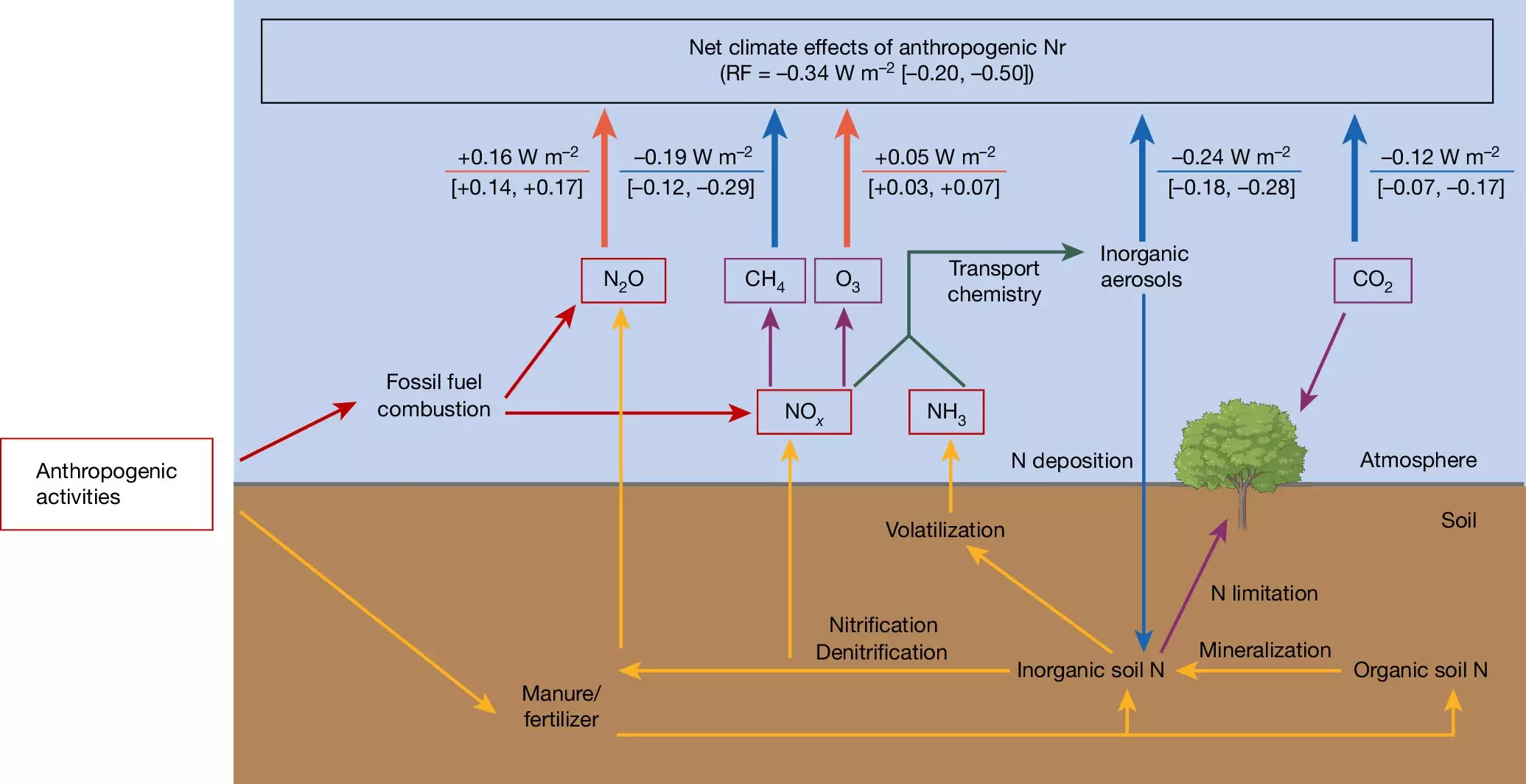Nitrogen is a fundamental element that supports life on Earth, constituting approximately 78% of the atmosphere. For farmers, it is invaluable as a nutrient necessary for plant growth and agricultural productivity. However, the same compounds that make nitrogen essential for food production can also lead to severe environmental repercussions. The dualistic nature of nitrogen—its ability to be both beneficial and detrimental to the environment—poses a pressing challenge in the age of climate change. An international team led by scientists at the Max Planck Institute for Biogeochemistry has shed light on the intricate balance between the benefits and harms associated with nitrogen usage.
While nitrogen in its elemental form is inert and harmless to the climate, its reactive forms, often released through human activities—such as agricultural fertilizers or fossil fuel combustion—have been shown to have profound and complicated effects on both local ecosystems and the global atmosphere. This paradox should compel us to rethink our relationship with nitrogen and its applications in agriculture and industry.
The Surprising Climate Effects of Reactive Nitrogen
At first glance, it may seem counterintuitive that nitrogen compounds could potentially have a cooling effect on the climate, considering their notorious reputation for causing air and water pollution. The Max Planck study reveals that while compounds like nitrous oxide (N₂O) contribute significantly to greenhouse gas emissions—being nearly 300 times more potent than carbon dioxide (CO₂)—reactive nitrogen elements can also act as climate coolants through various mechanisms.
For example, nitrogen oxides (NOₓ) generated from fossil fuel combustion can form fine particles in the atmosphere, reflecting sunlight and contributing to a localized cooling effect. Additionally, the introduction of nitrogen into ecosystems often leads to enhanced plant growth, allowing them to absorb more CO₂, which indirectly contributes to a cooling effect on a global scale. These findings challenge conventional wisdom and underline the complexity of nitrogen’s role in our climate dynamics.
Unpacking the Negative Radiative Forcing
The findings from the Max Planck Institute researchers highlight a nuanced aspect of climate science known as negative radiative forcing. While man-made global warming sources contribute positively to warming—averaging 2.7 watts per square meter over the past decade—the study indicates that the human-induced addition of reactive nitrogen has a counteractive cooling effect, estimated at -0.34 watts per square meter.
This revelation complicates the narrative around anthropogenic influences on climate. It reflects a reality where the relationship between nitrogen inputs and global temperature is not linear. Scientists must consider spatial variations and interconnections within the global nitrogen cycle when assessing ecological impacts. However, it is essential to remember that even with this cooling effect, the broader consequences of nitrogen emissions—such as biodiversity loss, health risks, and ozone depletion—remain disastrous.
The Environmental Trade-Offs of Nitrogen Management
The complex implications of reactive nitrogen demand a careful examination of agricultural practices and policies. While enhanced nitrogen usage can improve crop yields, it is not without its pitfalls. Increased nitrogen emissions from fertilizers have been linked to a range of negative externalities, from eutrophication in aquatic systems to impaired air quality. As such, there is a pressing need for more sustainable agricultural techniques that maximize nitrogen efficiency without exacerbating atmospheric problems.
By adopting integrated approaches that consider ecological health alongside agricultural needs, we have the opportunity to mitigate the adverse effects of nitrogen while maintaining food security. Innovations like precision agriculture can optimize nitrogen application, reduce waste, and thereby limit both nitrous oxide emissions and the associated warming effects.
A Call for Holistic Climate Solutions
While the findings of the Max Planck study may seem to provide a silver lining in the otherwise grim narrative of climate change, they should not serve as a license to increase nitrogen inputs recklessly. The complexities surrounding nitrogen’s role in climate dynamics call for a more nuanced approach, blending ecological wisdom with technological advances in management practices.
As we navigate the murky waters of climate policy and environmental health, it is crucial to recognize that taking a reductionist view toward nitrogen emissions is insufficient. A multi-faceted strategy that addresses greenhouse gases and nitrogen compounds simultaneously is vital. Without such an approach, we risk perpetuating harmful practices that could negate any cooling benefits reactive nitrogen may provide.
The intricate interplay between nitrogen, climate, and ecological systems is too important to overlook. As the scientific community continues to uncover the implications of human activity on the nitrogen cycle, we must strive for a deeper understanding, fostering practices that prioritize both environmental and human health.


Leave a Reply